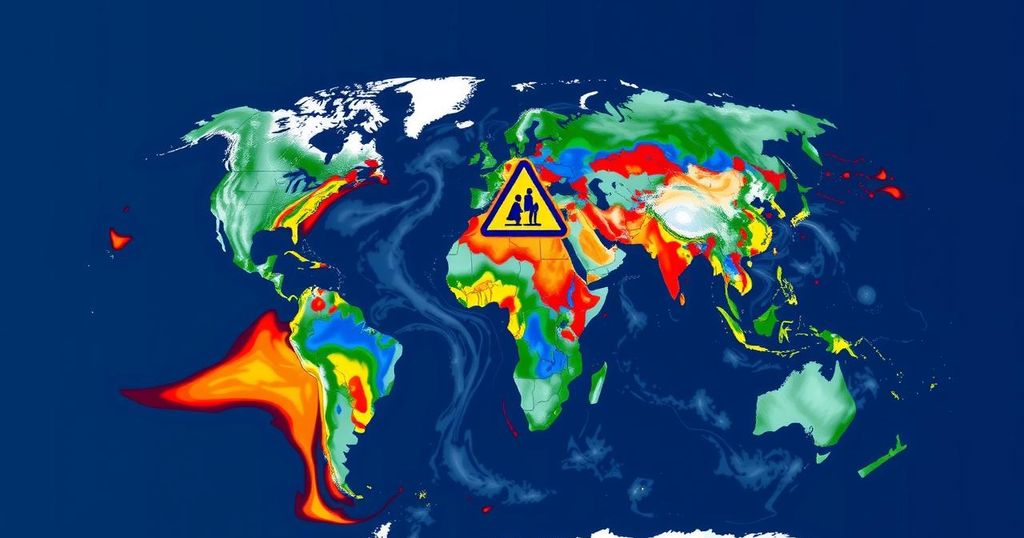Global Weather Hazards Summary: November 21-27, 2024
Between November 21 and November 27, 2024, significant rainfall was recorded across various regions of Africa and Central America. Kenya, southern Somalia, and Mozambique experienced heavy rains, while Tropical Storm Sara caused extreme weather in Central America. Flooding continued in Colombia and several countries in West Africa faced severe water-related challenges, though conditions improved in Nigeria.
Between November 21 and November 27, 2024, the global weather pattern has exhibited notable characteristics, particularly highlighting ENSO-neutral conditions. In this duration, significant rainfall events manifested in multiple regions of Africa, particularly affecting Kenya, southern Somalia, and Mozambique. Furthermore, Tropical Storm Sara unleashed extraordinary precipitation across Central America, while Colombia experienced severe flooding due to heavy rains.
In Africa, central and eastern Kenya, along with southern Somalia, have faced persistent heavy rainfall, with localized heavy rains also reported in Mozambique and portions of eastern and northeastern South Africa. The Sudd wetlands in South Sudan remain largely flooded, although upstream conditions along the White Nile have improved. Meanwhile, northeastern Ethiopia has been struck by heavy rains leading to significant flooding.
Countries such as Guinea-Bissau, Guinea, northern Sierra Leone, central and southern Mali, Senegal, southern Niger, northern Nigeria, central and southern Chad, and northern Cameroon have all reported severe flooding. It is comforting to note, however, that conditions have markedly improved in Nigeria compared to earlier in the month.
Conversely, regions like Ghana, central Togo, central Benin, and parts of western Nigeria are grappling with abnormal dryness due to insufficient rainfall during the July-August period. Northern Ghana, eastern Nigeria, and parts of Cameroon are also facing drought conditions resulting from inadequate rainfall distribution.
Additionally, southeastern Ethiopia and central to southern Somalia have encountered below-average precipitation. Although heavy rainfall in November has alleviated some dryness in eastern Kenya and southern Somalia, central Somalia continues to struggle with drought conditions. The forecast indicates unusually high temperatures for northwestern Africa and parts of Madagascar, raising concerns for the region. In Angola, localized heavy rainfall poses a risk of flash flooding, and similar conditions have been observed in the Ituri province of northeastern Democratic Republic of the Congo due to the overflow of Lake Albert since the beginning of November.
The global weather hazards report from November 21 to November 27, 2024, highlights several critical weather incidents worldwide, particularly focusing on Africa and Central America. The report emphasizes ongoing ENSO-neutral conditions, which influence weather patterns significantly, resulting in varying precipitation levels across different regions. With tropical storms and persistent rainfall affecting regions such as Central America and extensive flooding in Africa, the document aims to provide an overview of the current weather challenges and assess the implications of these events.
The weather summary from November 21 to November 27, 2024, underscores significant rainfall and flood occurrences across Africa and Central America, driven by ENSO-neutral conditions. While some regions are witnessing improvements, many others continue to grapple with the effects of heavy precipitation, abnormal dryness, and drought. The report highlights the importance of addressing these weather-related challenges, particularly in vulnerable areas experiencing severe impacts due to climatic variations.
Original Source: reliefweb.int




Post Comment